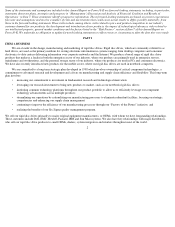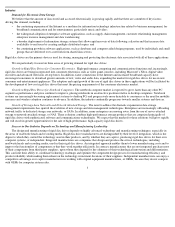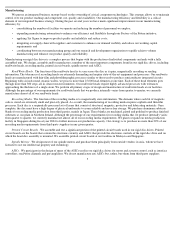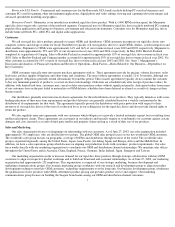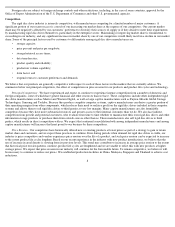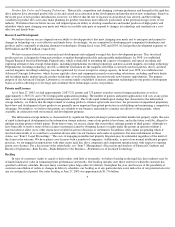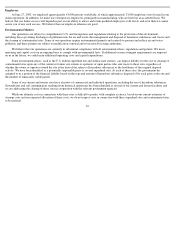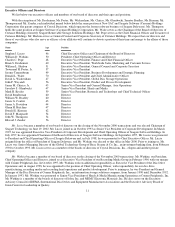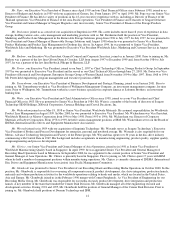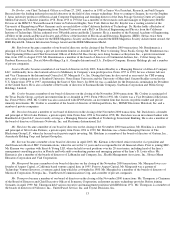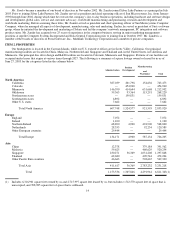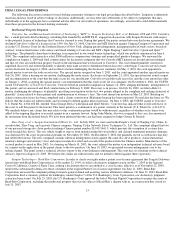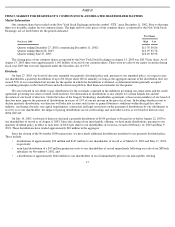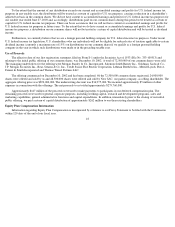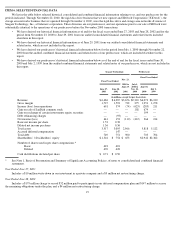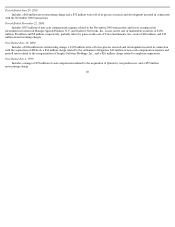Seagate 2002 Annual Report Download - page 13
Download and view the complete annual report
Please find page 13 of the 2002 Seagate annual report below. You can navigate through the pages in the report by either clicking on the pages listed below, or by using the keyword search tool below to find specific information within the annual report.
Employees
At June 27, 2003, we employed approximately 43,000 persons worldwide, of which approximately 33,000 employees were located in our
Asian operations. In addition, we make use of temporary employees, principally in manufacturing, who are hired on an as-needed basis. We
believe that our future success will depend in part on our ability to attract and retain qualified employees at all levels, and even then we cannot
assure you of any such success. We believe that our employee relations are good.
Environmental Matters
Our operations are subject to comprehensive U.S. and foreign laws and regulations relating to the protection of the environment,
including those governing discharges of pollutants into the air and water, the management and disposal of hazardous substances and wastes and
the cleanup of contaminated sites. Some of our operations require environmental permits and controls to prevent and reduce air and water
pollution, and these permits are subject to modification, renewal and revocation by issuing authorities.
We believe that our operations are currently in substantial compliance with all environmental laws, regulations and permits. We incur
operating and capital costs on an ongoing basis to comply with environmental laws. If additional or more stringent requirements are imposed
on us in the future, we could incur additional operating costs and capital expenditures.
Some environmental laws, such as the U.S. federal superfund law and similar state statutes, can impose liability for the cost of cleanup of
contaminated sites upon any of the current or former site owners or operators or upon parties who sent waste to these sites, regardless of
whether the owner or operator owned the site at the time of the release of hazardous substances or the lawfulness of the original disposal
activity. We have been identified as a potentially responsible party at several superfund sites. At each of these sites, the government has
assigned to us a portion of the financial liability based on the type and amount of hazardous substances disposed of by each party at the site and
the number of financially viable parties.
Some of our current and former sites have a history of commercial and industrial operations, including the use of hazardous substances.
Groundwater and soil contamination resulting from historical operations has been identified at several of our current and former facilities and
we are addressing the cleanup of these sites in cooperation with the relevant government agencies.
While our ultimate costs in connection with these sites is difficult to predict with complete accuracy, based on our current estimates of
cleanup costs and our expected allocation of these costs, we do not expect costs in connection with these superfund sites and contaminated sites
to be material.
10



